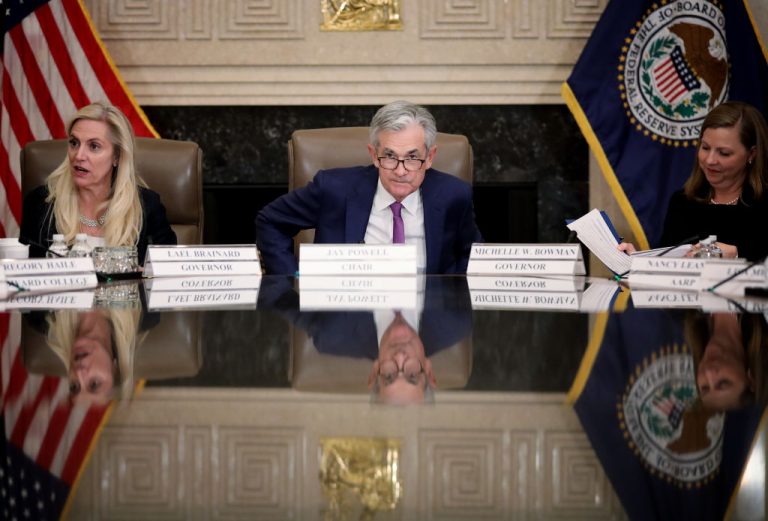In a step towards withdrawing the massive support it has been providing to the financial markets and the economy, the United States Federal Reserve announced on Nov. 3, that it will be scaling down the aggressive monthly purchases of bonds.
The Fed had begun this monetary stimulus program in March 2020 as a response to the economic crisis triggered by the pandemic. Federal Open Market Committee (FOMC), the Fed’s body for monetary policy, announced that the tapering of bond purchases would begin later this month.
The Fed has been buying bonds worth $120 billion every month since March last year, with $80 billion going into U.S. Treasuries and the remaining $40 billion in mortgage bonds.
According to the new policy, the Federal Reserve will only buy $70 billion worth of treasuries and $35 billion in mortgage bonds from November, which is a total reduction of $15 billion.
The decision to reduce bond purchases came “in light of the substantial further progress the economy has made toward the Committee’s goals since last December,” the committee said in a statement on Nov. 3. The Fed also indicated that it would be ready to make adjustments to the process if needed.
Success
You are now signed up for our newsletter
Success
Check your email to complete sign up
“The Committee judges that similar reductions in the pace of net asset purchases will likely be appropriate each month, but it is prepared to adjust the pace of purchases if warranted by changes in the economic outlook,” it added.
When it came to interest rates, policymakers voted to maintain the rates at the same record low level that has been in effect since March 2020. An interest rate between 0 to 0.25 percent will be maintained until labor market conditions reach levels consistent with the committee’s plans.
“We don’t think it’s time yet to raise interest rates. There is still ground to cover to reach maximum employment, both in terms of employment and in terms of participation… We think we can be patient,” Fed Chairman Jerome Powell told reporters.
In order to avoid a potential selloff in the market, the Fed has been conveying its plans to exit from the pro-stimulus monetary policies that have been enacted for the past several months. But, with surging inflation posing significant risks, the central bank faces huge challenges.
In September, the personal consumption expenditures (PCE) price index, which is the Fed’s favored gauge for inflation, rose 4.4 percent. This was much higher than the agency’s preferred target of two percent.
Economists were keeping a close tab on the FOMC’s statement, to see if officials placed more weight on the rising inflation. However, there were very few indications to this effect. The policymakers acknowledged that inflation has been rising due to “supply and demand imbalances” related to the COVID-19 pandemic. But they insisted that this rise in inflation would soon fade away.
Fed Chairman Powell expects the surge in inflation to continue due to supply chain disruptions. He sees a recovery to start only around the middle of next year.“Our baseline expectation is that supply chain bottlenecks and shortages will persist well into next year and elevated inflation as well… As the pandemic supplies, supply chain bottlenecks will abate and growth will move up and as that happens inflation will decline from today’s elevated levels,” Powell said. Once the supply chain issues are resolved, he believes the economy will continue with its recovery.















